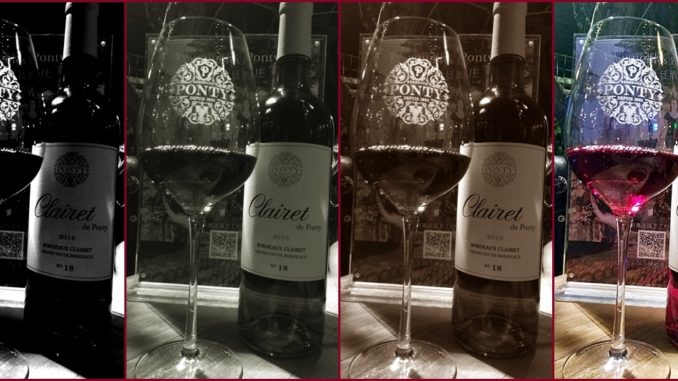
[A version of this story first appeared in Grape Wall newsletter. Sign up for free here.]
What happens when a superhero has an identity crisis? When Superman isn’t sure how to fight crime? When Shang-Chi forgets his kung fu moves? When Wonder Woman wonders if her “lasso of truth” still works?
These days, some people are questioning the identity of Bordeaux, a bit of a superhero for China wine consumers and producers over the years, one that has played a major role in the country’s wine scene.
The explosion in wine imports in China some dozen years ago was largely driven by Bordeaux and its association with status and quality by consumers, with Lafite at the peak. Even if some found the wine too tannic, or got duped by dubious sellers into something like LaFeet instead of Lafite, they still bought, bought and bought.
Bordeaux inspired China’s producers, too. The country’s wine vineyards are dominated by Cabernet Sauvignon, Merlot et al. Many Chinese now well-placed in the local trade studied and / or did vintages in Bordeaux. And regions nationwide are continuously compared to Bordeaux despite having their own “terroirs.” One can find dozens — possibly thousands — of examples.
That includes Ningxia, which has far more in common with Argentina’s high desert-like region of Mendoza than Bordeaux.
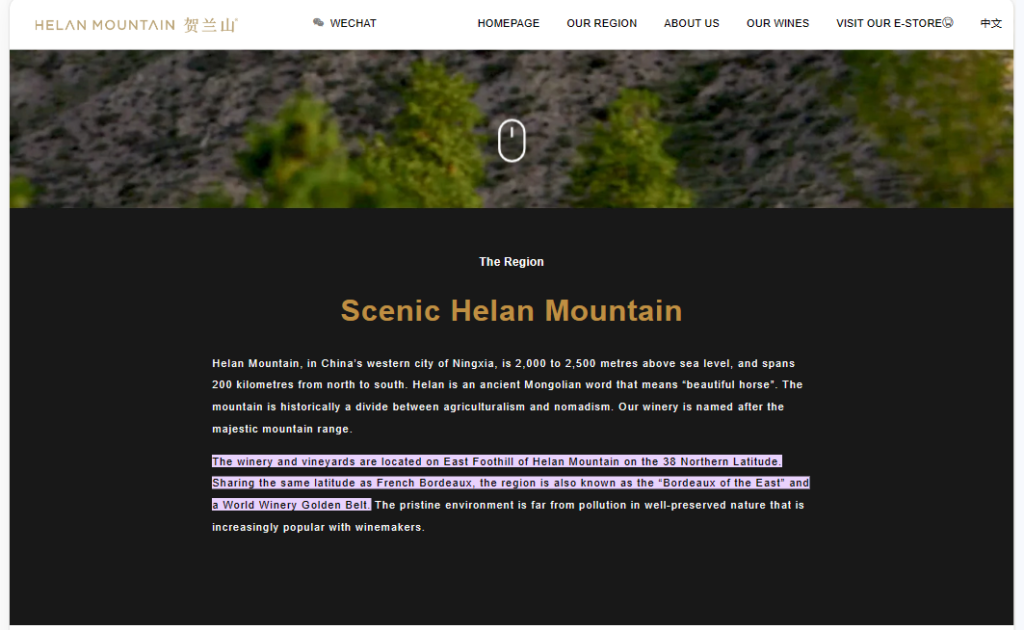
(Source: Helan Mountain)
Shandong, too, where wineries must consider that most Bordeaux-like of vintage factors — monsoons.
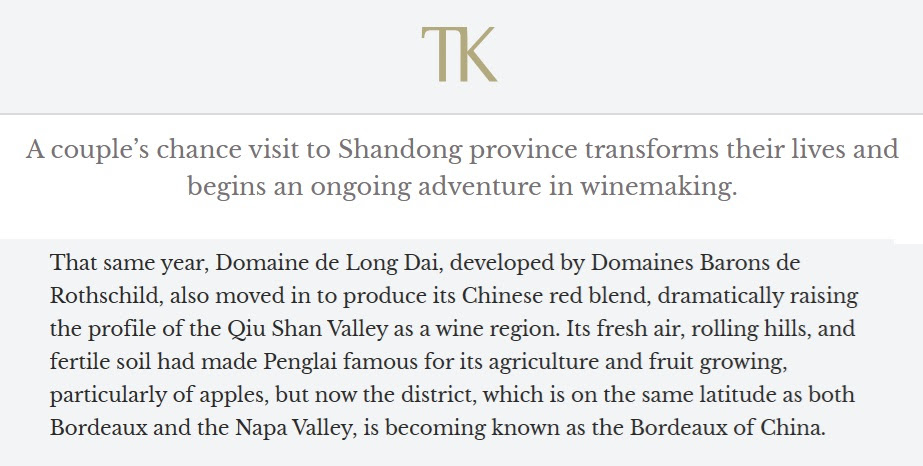
(Source: Tasting Kitchen)
And Huailai County just outside Beijing, where, unlike in Bordeaux, the vines must be buried each fall to protect them from the cold dry winters.
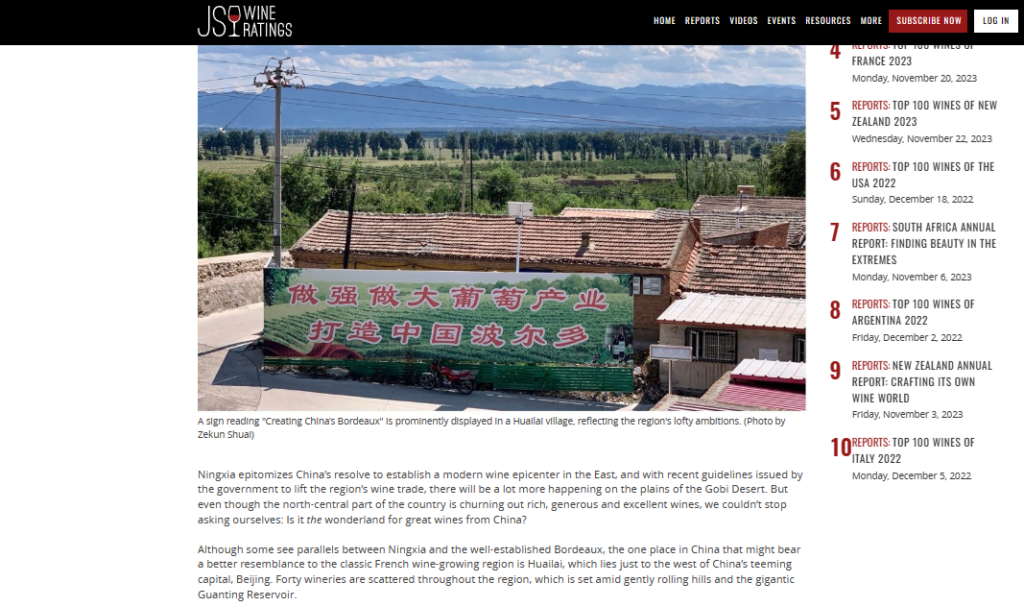
(Source: jamessuckling.com)
Even 2000-plus meters up in the mountains of Yunnan, at a latitude that cuts across Mexico, Saudi Arabia and the Sahara Desert, there are comparisons.
Jean-Guillaume Prats, then with Moet Hennessy, said of its Ao Yun vineyards there, “Our climate is similar to Bordeaux, but with a high-mountain identity.”
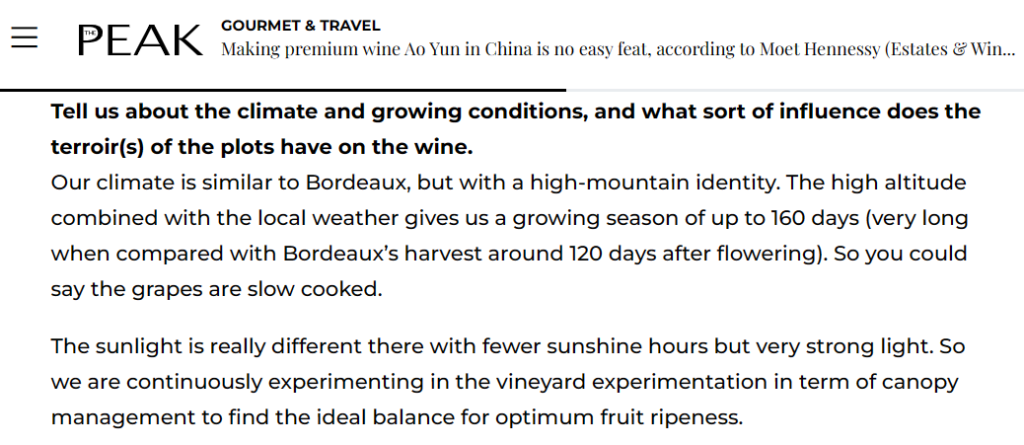
(Source: The Peak)
So, what does it mean when Bordeaux, a region associated with history and tradition, with consistency and quality, with grapes like Cabernet Sauvignon, Cabernet Franc and Merlot, what does it mean when Bordeaux turns to… hybrid grape varieties?
That happened this year as four varieties — Floréal, Sauvignac, Sauvignier Gris and Vidoc Noir — got the green light to constitute up to 10 percent of some Bordeaux wines.
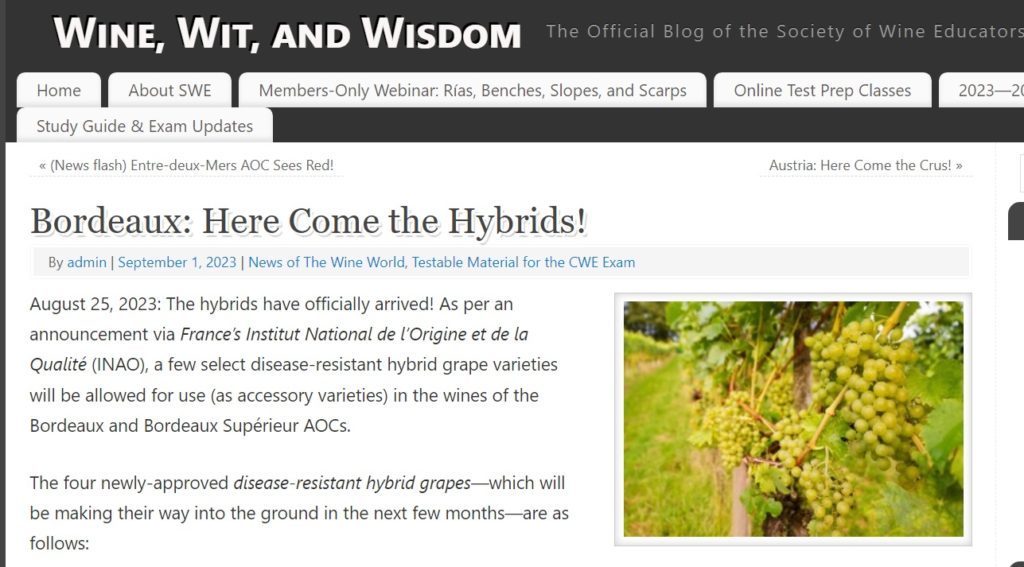
This is alongside six new varieties approved about three years ago, including Marselan, which stirred excitement in China given it has emerged as a signature grape here and is used by Lafite’s Longdai in Shandong province.
So, Bordeaux’s identity is indeed changing, or at least getting tweaked, with lots of questions re the ultimate result.
Nanning-based Julien Boulard recently raised the situation on social media.
“Three years ago, everyone was talking about the new grape varieties allowed in Bordeaux—Marselan, Touriga Nacional, Castet, Arinarnoa, Albarino, and Liliorila. Oddly enough, it seems no one noticed four more varieties were quietly added this year. Even I, a Formateur Accrédité des Vins de Bordeaux, wasn’t in the loop,” he wrote. “Given the fuss over the last addition, it wouldn’t be surprising if they kept this one hush-hush to avoid more bad press. And indeed, it might even be worse than in 2020!”
Boulard noted that it “shakes up” his approach as an educator — “I preached that, except for Baco 22A in Armagnac, hybrids were a no-go in French winemaking” — and asked, “Is the Pandora’s box officially wide open?”
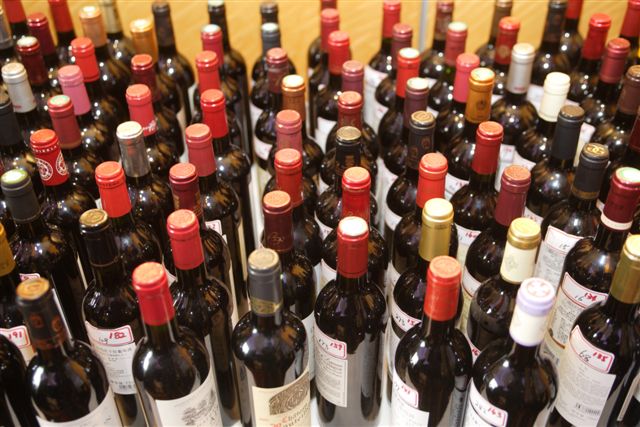
I’m not an expert on Bordeaux; I haven’t been there; most of my wine life is focused on China and its producers. And I have not the formal education that sears those French grapes, terroirs, appellations and vintages into one’s brain.
I also realize there are many potential reasons for justifying hybrid varieties, from climate change to disease resistance to environmental concerns to consumer trends.
What I am most interested in is what this move might mean for one of Bordeaux’s key markets, China, where consumers and producers have been such strong followers.
First, I think the people most likely to feel the effects are educators–with Bordeaux a bedrock for most people’s training–and promoters of the region. They have presented a certain view of Bordeaux and now that is being upended. And if the moves in Bordeaux are part of a bigger transformation of French wine, the changes will be even more drastic.
But in terms of consumers, it is harder to see repercussions. Many who buy Bordeaux still do so as a default status purchase. If you don’t want to learn or think much about your wine purchase, and are buying it as a gift for someone of like mind, Bordeaux is still an easy choice.
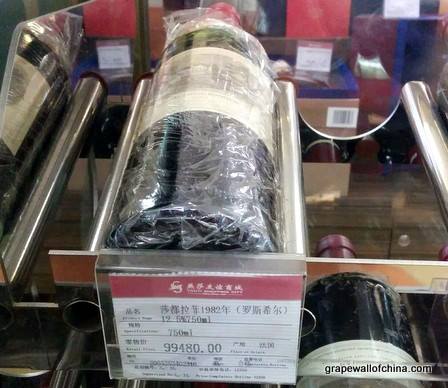
This gives Bordeaux a steady stream of sales from people who have negligible wine knowledge and are far from being up to date, or even caring, about arcane hybrids.
On the flip side, this situation helps those who dubiously trade on Bordeaux’s good reputation, whether by making technically legal wines, with names / labels close to the likes of Lafite,, Latour, Margaux et al, or outright copies.
Thus, if you me asked what is a bigger threat to Bordeaux in China — the potential for producers to use hybrid grapes and upset consumers or the reality of so much dubious wine circulating for so long that it has become the norm — the answer is easily the latter.
Especially since Bordeaux could find marketing solutions for dealing with the new varieties. That could be as easy as creating a category for producers who wish to promote wines only using varieties allowed before 2020. Call it something like “Bordeaux 20/20”, create a sticker for bottles, make it easy to spot, etc.
Producers and regions come up with such straightforward market-specific solutions like this all the time. Like how some producers send bottles sealed with corks to China while sending those with screw caps to other markets.
Beyond status buyers, there is also a growing number of consumers who drink for curiosity and pleasure and who are increasingly knowledgeable. I see no threat from them, either. Frankly, if they can grasp Bordeaux’s various chateaus, appellations, vintages et al, I’m sure they are intelligent enough to process news of incoming grape varieties and be curious about it.
And as for China’s wine regions and producers, they are also increasingly sophisticated.
On the ground, I have heard people in Ningxia compare their region to Napa Valley as a role model — one major attraction: the price floor for entry-level prices in Napa is high! — or to Mendoza, as both are high-altitude regions with imposing mountain ranges, ample sunshine and a need to irrigate.
Of course, these regions all have significant differences, too. The point is that Bordeaux isn’t the only point of reference.
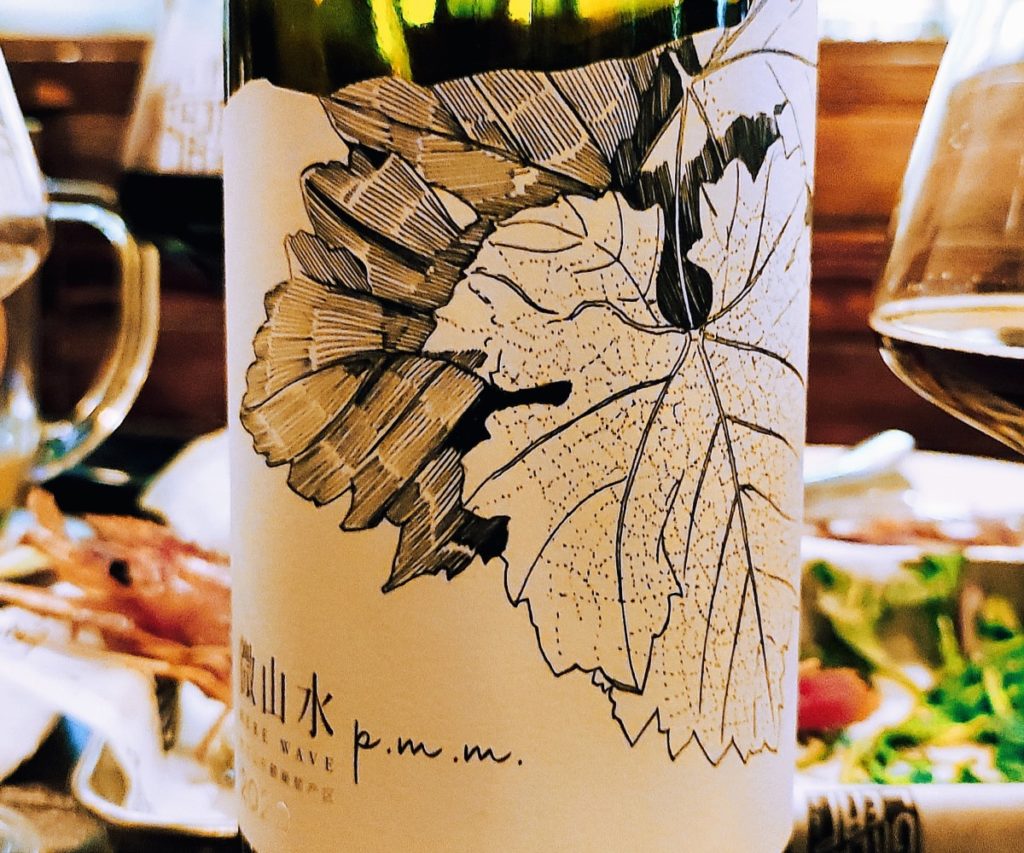
And in the ground, we some more grape varieties planted than ever.
In 2012, Ningxia’s authorities asked me to help bring UK critic Jancis Robinson to China and we ultimately presented to her, and a panel of nine other judges, 39 wines that were mostly Bordeaux-style blends with plenty of new French oak, basically the default style of the region.
Fast forward to today, and those Bordeaux-style wines must now share the region with a growing number of varieties, in part due to government initiatives and financial incentives to expand the range of grapes.
A favorite example is Mountain Wave, in the up-and-coming Jinshan area, which has neither Cabernet nor Merlot. But it does have a curious mix — maybe the world’s only one? — of Malbec, Marselan and Pinot Noir. There is even a blend of all three called PMM that is well-liked by my friends, including one who imports Bordeaux.
And there are lots of other delicious wine now being made in Ningxia with grapes like Malbec, Syrah, Dornfelder, Sangiovese, Viognier, Vidal and more.
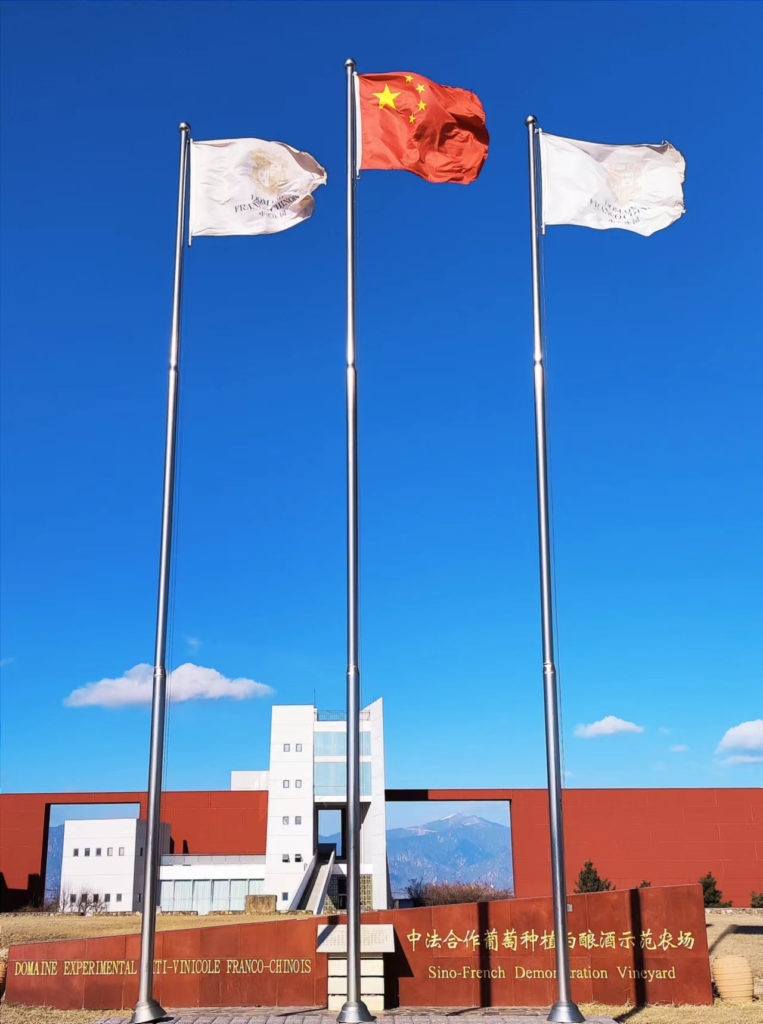
It’s not just Ningxia, either. Last month, I visited Domaine Franco-Chinois (DFC) and its neighbor / sibling winery Canaan just outside Beijing to taste over 40 wines.
DFC was established in the late 1990s as a China-France venture called the Sino-French Demonstration Vineyard. It’s first director was from Bordeaux. It’s current chief winemaker trained in Bordeaux before returning to China in 2004. Other high-profile alumni from the operation have strong ties to Bordeaux.
And along with Cabernet and Merlot, we tasted reds like Pinot Noir, Syrah and Tempranillo and whites like Chardonnay, Sauvignon Blanc and Petit Manseng. Plus skin-contact wines made with Riesling, Chenin Blanc and Muller-Thurgau. And Marselan: DFC is where this cross Cabernet-Grenache grapes got its start in China.
What’s my point?
Bordeaux still has a great deal of status in China. When Lafite’s Longdai releases a new vintage, many in the vintelligentsia — writers, educators and consultants — get excited. When the Grand Cru Classe tour came through Beijing yesterday, we saw a slew of media posts. And when PR people need to write about a Chinese wine region for the general public, they still reference Bordeaux, as it is one of the few wine names known.
But in practical terms, China’s consumers are drinking an increasingly wide range of wines. And China’s winemakers are also pursuing styles and varieties far beyond Bordeaux’s, doing less mimicking and more exploring. Case in point: directly across from Lafite’s Longdai in Shandong, less than ten minutes by foot, is Runaway Cow, where the former dean of University of Burgundy’s wine-making school is consulting. This isn’t an either-or game, it’s about having both.
In that same vein, after all the new grape varieties are planted and bearing fruit in Bordeaux, the region might find itself with two consumer markets in China.
The traditional one, where Cabernet and friends dominate, where people look for signature identifiable styles, where they enjoy storied histories and traditions.
And a newer one, where rather than trying a tenth straight Paulliac of a given vintage, consumers wan something different. These are the same kind of consumers who might now be exploring Burgundy or orange wine or pet-nat in the country’s wine bars.
Bordeaux already grasps this. Eighteen months ago, I joined an online meeting with CIVB, the Bordeaux promotion agency, to talk about reaching new consumers with new labels, bottle shapes, grape varieties and more. (That included the six varieties that had just been introduced.)
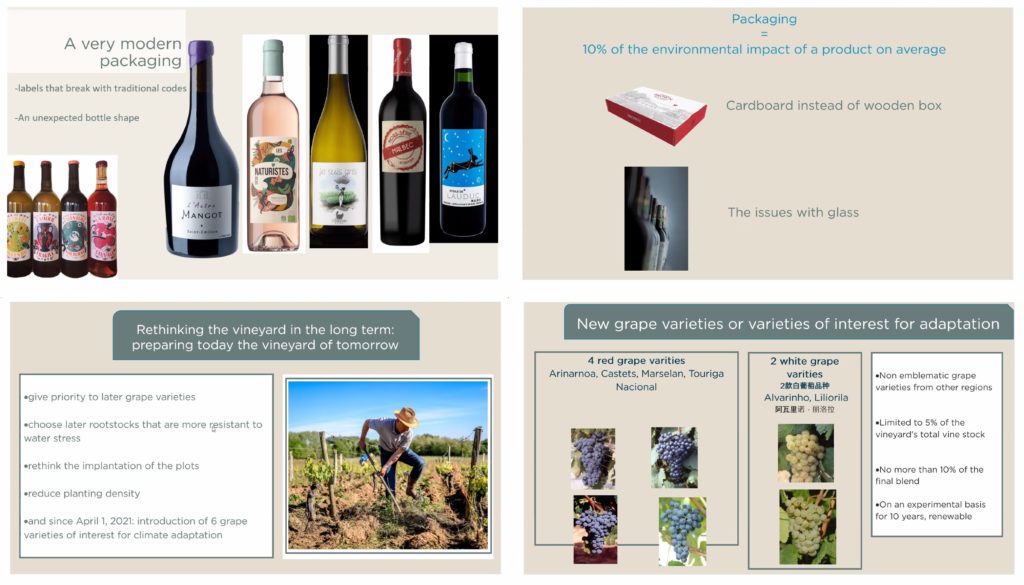
Even before that, I had such discussions with winery owners from Bordeaux, including Helene Ponty of Les Vignobles Ponty in Canon-Fronsac. (Ponty has also done two of the best Q&As in my blog’s history — see here and here.)
As typical Bordeaux reds flowed into China, and her sub-distributors remained apprehensive of the white wines even though consumers liked them, Ponty brought in her Clairet, a very light red style that dates to the Middles Ages. And that vibrant purple drop really stood out versus the darker flatter reds at tastings.
“It’s a very niche wine in China. Rose is already a niche wine and Clairet isn’t even a rose, it’s a light red,” said Ponty. “It’s s difficult to explain, it’s difficult to introduce, and still we sold out everything we brought in two weeks after importing it.”
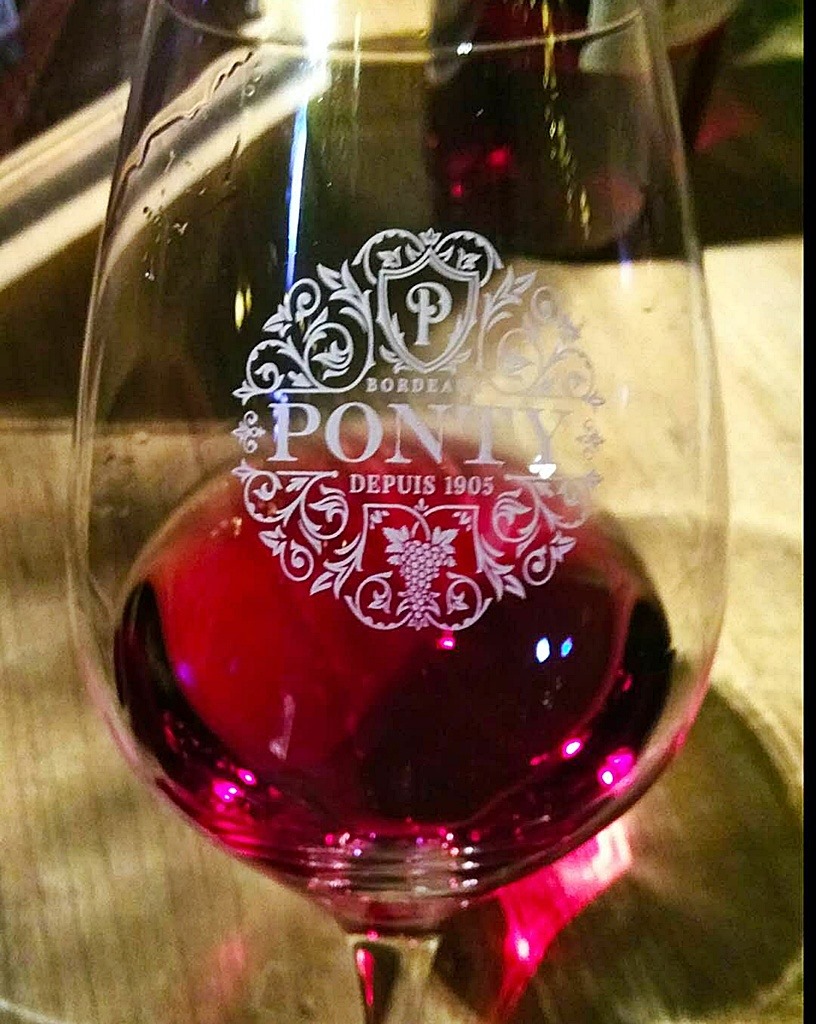
Maybe those hybrid grapes have a fighting chance after all, maybe both traditional Bordeaux wines and new styles will find a following in China, just as the country’s producers are pursuing both, maybe what’s happening in Bordeaux isn’t so much an identity crisis but a makeover, and the superhero is eventually going to emerge with a new cape and new powers.
Grape Wall has no sponsors of advertisers: if you find the content and projects like World Marselan Day worthwhile, please help cover the costs via PayPal, WeChat or Alipay.
Sign up for the free Grape Wall newsletter here. Follow Grape Wall on LinkedIn, Instagram, Facebook and Twitter. And contact Grape Wall via grapewallofchina (at) gmail.com.

Leave a Reply
You must be logged in to post a comment.